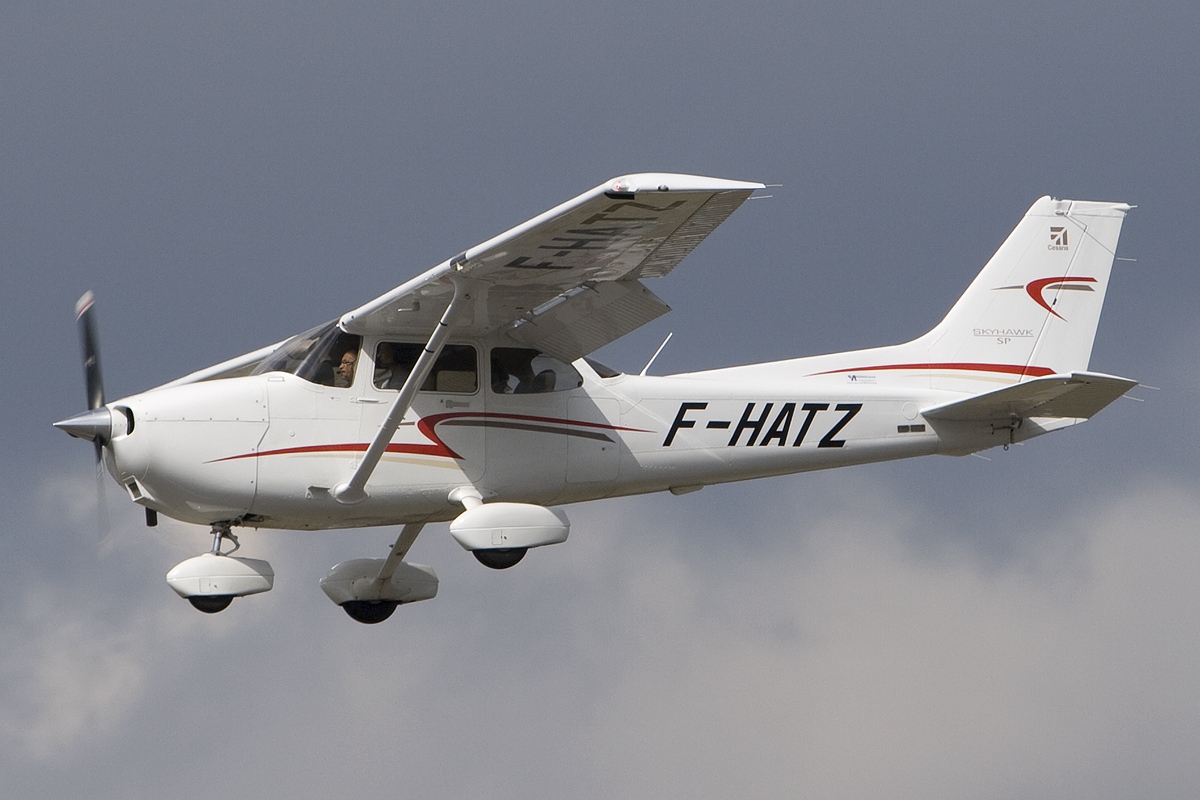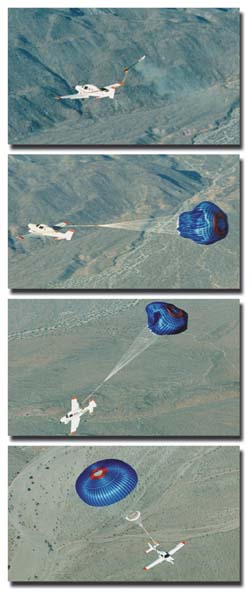|
Ekolot JK-05L Junior
The Ekolot JK-05L Junior is a Polish ultralight aircraft, designed and produced by Ekolot of Krosno. It was certified in Poland in February 2010. The aircraft is supplied as a kit for amateur construction or as a complete ready-to-fly aircraft.Bayerl, Robby; Martin Berkemeier; et al: ''World Directory of Leisure Aviation 2011-12'', page 44. WDLA UK, Lancaster UK, 2011. ISSN 1368-485XTacke, Willi; Marino Boric; et al: ''World Directory of Light Aviation 2015-16'', page 45. Flying Pages Europe SARL, 2015. Design and development The JK-05L was designed to comply with the Fédération Aéronautique Internationale microlight rules. It features a strut-braced high wing, an enclosed cockpit with two seats in side-by-side configuration, fixed tricycle landing gear and a single engine in tractor configuration. The aircraft is made from composites. Its span wing employs an NN-1817 airfoil, has an area of and employs carbon fibre flaperons. The twin fuel tanks are located behind the ... [...More Info...] [...Related Items...] OR: [Wikipedia] [Google] [Baidu] |
WikiProject Aircraft
A WikiProject, or Wikiproject, is a Wikimedia movement affinity group for contributors with shared goals. WikiProjects are prevalent within the largest wiki, Wikipedia, and exist to varying degrees within Wikimedia project, sister projects such as Wiktionary, Wikiquote, Wikidata, and Wikisource. They also exist in different languages, and translation of articles is a form of their collaboration. During the COVID-19 pandemic, CBS News noted the role of Wikipedia's WikiProject Medicine in maintaining the accuracy of articles related to the disease. Another WikiProject that has drawn attention is WikiProject Women Scientists, which was profiled by ''Smithsonian Magazine, Smithsonian'' for its efforts to improve coverage of women scientists which the profile noted had "helped increase the number of female scientists on Wikipedia from around 1,600 to over 5,000". On Wikipedia Some Wikipedia WikiProjects are substantial enough to engage in cooperative activities with outside organization ... [...More Info...] [...Related Items...] OR: [Wikipedia] [Google] [Baidu] |
Tractor Configuration
In aviation, the term tractor configuration refers to an aircraft constructed in the standard configuration with its engine mounted with the propeller in front of it so that the aircraft is "pulled" through the air. Oppositely, the pusher configuration places the airscrew behind and propels the aircraft forward. Through common usage, the word "propeller" has come to mean any airscrew, whether it actually propels or pulls the plane. In the early years of powered aviation both tractor and pusher designs were common. However, by the midpoint of the First World War, interest in pushers declined and the tractor configuration dominated. Today, propeller-driven aircraft are assumed to be tractors unless it is stated otherwise. Origins The first airplane to have a "tractor" configuration was the Goupy No.2 (first flight on 11 March 1909) designed by Mario Calderara and financed by Ambroise Goupy at the French firm Blériot Aéronautique. When it was constructed, it was the fastest ... [...More Info...] [...Related Items...] OR: [Wikipedia] [Google] [Baidu] |
2010s Polish Ultralight Aircraft
1 (one, unit, unity) is a number representing a single or the only entity. 1 is also a numerical digit and represents a single unit of counting or measurement. For example, a line segment of ''unit length'' is a line segment of length 1. In conventions of sign where zero is considered neither positive nor negative, 1 is the first and smallest positive integer. It is also sometimes considered the first of the infinite sequence of natural numbers, followed by 2, although by other definitions 1 is the second natural number, following 0. The fundamental mathematical property of 1 is to be a multiplicative identity, meaning that any number multiplied by 1 equals the same number. Most if not all properties of 1 can be deduced from this. In advanced mathematics, a multiplicative identity is often denoted 1, even if it is not a number. 1 is by convention not considered a prime number; this was not universally accepted until the mid-20th century. Additionally, 1 is the ... [...More Info...] [...Related Items...] OR: [Wikipedia] [Google] [Baidu] |
Aircraft Engine
An aircraft engine, often referred to as an aero engine, is the power component of an aircraft propulsion system. Most aircraft engines are either piston engines or gas turbines, although a few have been rocket powered and in recent years many small UAVs have used electric motors. Manufacturing industry In commercial aviation the major Western manufacturers of turbofan engines are Pratt & Whitney (a subsidiary of Raytheon Technologies), General Electric, Rolls-Royce, and CFM International (a joint venture of Safran Aircraft Engines and General Electric). Russian manufacturers include the United Engine Corporation, Aviadvigatel and Klimov. Aeroengine Corporation of China was formed in 2016 with the merger of several smaller companies. The largest manufacturer of turboprop engines for general aviation is Pratt & Whitney. General Electric announced in 2015 entrance into the market. Development history * 1848: John Stringfellow made a steam engine for a 10-foot ... [...More Info...] [...Related Items...] OR: [Wikipedia] [Google] [Baidu] |
Four Stroke
A four-stroke (also four-cycle) engine is an internal combustion (IC) engine in which the piston completes four separate strokes while turning the crankshaft. A stroke refers to the full travel of the piston along the cylinder, in either direction. The four separate strokes are termed: #Intake: Also known as induction or suction. This stroke of the piston begins at top dead center (T.D.C.) and ends at bottom dead center (B.D.C.). In this stroke the intake valve must be in the open position while the piston pulls an air-fuel mixture into the cylinder by producing vacuum pressure into the cylinder through its downward motion. The piston is moving down as air is being sucked in by the downward motion against the piston. #Compression: This stroke begins at B.D.C, or just at the end of the suction stroke, and ends at T.D.C. In this stroke the piston compresses the air-fuel mixture in preparation for ignition during the power stroke (below). Both the intake and exhaust valves are close ... [...More Info...] [...Related Items...] OR: [Wikipedia] [Google] [Baidu] |
Four-stroke
A four-stroke (also four-cycle) engine is an internal combustion (IC) engine in which the piston completes four separate strokes while turning the crankshaft. A stroke refers to the full travel of the piston along the cylinder, in either direction. The four separate strokes are termed: #Intake: Also known as induction or suction. This stroke of the piston begins at top dead center (T.D.C.) and ends at bottom dead center (B.D.C.). In this stroke the intake valve must be in the open position while the piston pulls an air-fuel mixture into the cylinder by producing vacuum pressure into the cylinder through its downward motion. The piston is moving down as air is being sucked in by the downward motion against the piston. #Compression: This stroke begins at B.D.C, or just at the end of the suction stroke, and ends at T.D.C. In this stroke the piston compresses the air-fuel mixture in preparation for ignition during the power stroke (below). Both the intake and exhaust valves are clo ... [...More Info...] [...Related Items...] OR: [Wikipedia] [Google] [Baidu] |
Rotax 912UL
The Rotax 912 is a horizontally-opposed four-cylinder, naturally aspirated, four-stroke aircraft engine with a reduction gearbox. It features liquid-cooled cylinder heads and air-cooled cylinders. Originally equipped with carburetors, later versions are fuel injected. Dominating the market for small aircraft and kitplanes, Rotax produced its 50,000th 912-series engine in 2014. Originally available only for light sport aircraft, ultralight aircraft, autogyros and drones, the 912-series engine was approved for certified aircraft in 1995. Design and development The Rotax 912 was first sold in 1989 in non- certificated form for use in ultralights and motorgliders. The original 912 UL engine has a capacity of and a compression ratio of 9.1:1. The engine differs from previous generation aircraft engines (such as the Lycoming O-235) in that it has air-cooled cylinders with liquid-cooled heads and uses a 2.43:1 PSRU reduction gearbox to reduce the engine's relatively hig ... [...More Info...] [...Related Items...] OR: [Wikipedia] [Google] [Baidu] |
Centre Stick
A centre stick (or center stick in the United States), or simply control stick is an aircraft cockpit arrangement where the control column (or joystick) is located in the center of the cockpit between the pilots or between the pilot's legs. Since the throttle controls are typically located to the left of the pilot, the right hand is used for the stick, although left-hand or both-hands operation is possible if required.Crane, Dale: ''Dictionary of Aeronautical Terms, third edition'', page 132. Aviation Supplies & Academics, 1997. . The centre stick is a part of an aircraft's flight control system and is typically linked to its ailerons and elevators, or alternatively to its elevons, by control rods or control cables on basic aircraft. On heavier, faster, more advanced aircraft the centre stick may also control power-assist modules. Modern aircraft centre sticks are also usually equipped with a number of electrical control switches within easy finger reach, in order to reduce t ... [...More Info...] [...Related Items...] OR: [Wikipedia] [Google] [Baidu] |
Ballistic Parachute
A ballistic parachute, ballistic reserve parachute, or emergency ballistic reserve parachute, is a parachute ejected from its casing by a small explosion, much like that used in an ejection seat. The advantage of the ballistic parachute over a conventional parachute is that it ejects the parachute canopy (oftentimes via a small rocket), causing it to open rapidly, this makes it ideal for attaching to light aircraft, hang gliders and microlights, where an emergency may occur in close proximity to the ground. In such a situation, a conventional parachute would not open quickly enough. In 1982, Comco Ikarus developed the FRS rocket-launched parachute system for its ultralight and hanglider aircraft. In 1998, Cirrus Aircraft (then known as Cirrus Design) provided the first ballistic parachutes as standard equipment on their line of type-certified aircraft, the Cirrus SR20; and in 2016, the company delivered the Cirrus Vision SF50, the first jet aircraft with a ballistic parachu ... [...More Info...] [...Related Items...] OR: [Wikipedia] [Google] [Baidu] |
Flaperon
A flaperon (a portmanteau of flap and aileron) on an aircraft's wing is a type of control surface that combines the functions of both flaps and ailerons. Some smaller kitplanes have flaperons for reasons of simplicity of manufacture, while some large commercial aircraft such as the Boeing 747, 767, 777, and 787 may have a flaperon between the flaps and aileron. The 787 has a configuration known as a SpoileFlaperon that combines the action of spoilers, flaps and ailerons into one control surface. Operation In addition to controlling the roll or bank of an aircraft, as do conventional ailerons, both flaperons can be lowered together to reduce stall speed, similarly to a set of flaps. On a plane with flaperons, the pilot still has the standard separate controls for ailerons and flaps, but the flap control also varies the flaperon's range of movement. A mechanical device called a "mixer" is used to combine the pilot's input into the flaperons. While the use of flaperons rath ... [...More Info...] [...Related Items...] OR: [Wikipedia] [Google] [Baidu] |
Carbon Fibre
Carbon fiber-reinforced polymers (American English), carbon-fibre-reinforced polymers (Commonwealth English The use of the English language in current and former member countries of the Commonwealth of Nations was largely inherited from British colonisation, with some exceptions. English serves as the medium of inter-Commonwealth relations. Many ...), carbon-fiber-reinforced plastics, carbon-fiber reinforced-thermoplastic (CFRP, CRP, CFRTP), also known as carbon fiber, carbon composite, or just carbon, are extremely strong and light fiber-reinforced plastics that contain carbon fibers. CFRPs can be expensive to produce, but are commonly used wherever high strength-to-weight ratio and stiffness (rigidity) are required, such as aerospace, superstructures of ships, automotive, civil engineering, sports equipment, and an increasing number of consumer and technical applications. The binding polymer is often a thermosetting polymer, thermoset resin such as epoxy, but oth ... [...More Info...] [...Related Items...] OR: [Wikipedia] [Google] [Baidu] |
.jpg)







.jpg)
